
The New General Catalogue of Nebulae and Clusters of Stars is an astronomical catalogue of deep-sky objects compiled by John Louis Emil Dreyer in 1888. The NGC contains 7,840 objects, including galaxies, star clusters and emission nebulae. Dreyer published two supplements to the NGC in 1895 and 1908, known as the Index Catalogues, describing a further 5,386 astronomical objects. Thousands of these objects are best known by their NGC or IC numbers, which remain in widespread use.

The Saturn Nebula is a planetary nebula in the constellation Aquarius. It appears as a greenish-yellowish hue in a small amateur telescope. It was discovered by William Herschel on September 7, 1782, using a telescope of his own design in the garden at his home in Datchet, England, and was one of his earliest discoveries in his sky survey. The nebula was originally a low-mass star that ejected its layers into space, forming the nebula. The central star is now a bright white dwarf star of apparent magnitude 11.5. The Saturn Nebula gets its name from its superficial resemblance to the planet Saturn with its rings nearly edge-on to the observer. It was so named by Lord Rosse in the 1840s, when telescopes had improved to the point that its Saturn-like shape could be discerned. William Henry Smyth said that the Saturn Nebula was one of Struve's nine "Rare Celestial Objects".
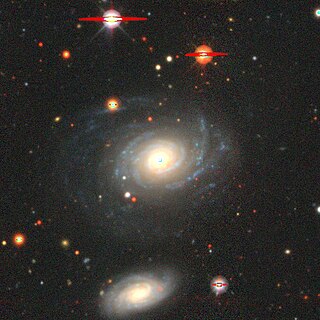
NGC 1 is an intermediate spiral galaxy of the morphological type Sbc, located in the constellation of Pegasus. It was discovered on 30 September 1861 by Heinrich d'Arrest.
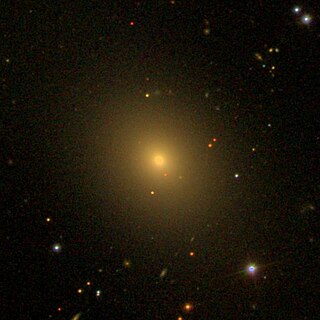
NGC 57 is an elliptical galaxy in the constellation Pisces. It was discovered on 8 October 1784 by astronomer William Herschel.
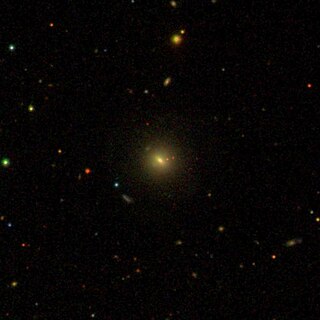
NGC 462 is an elliptical galaxy located in the Pisces constellation. It was discovered by Albert Marth on 23 October 1864. Dreyer, creator of the New General Catalogue, originally described it as "extremely faint, very small, stellar". The word stellar clearly suggests an initial misidentification of NGC 462 as a star.
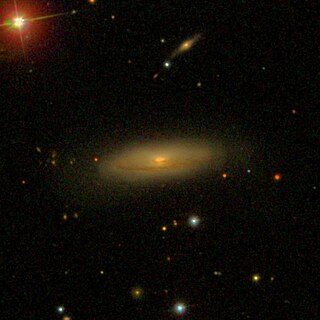
NGC 518 is a spiral galaxy located in the Pisces constellation. It was discovered by Albert Marth on 17 December 1864.

NGC 6801 is a spiral galaxy in the constellation of Cygnus. It was discovered by Lewis A. Swift on August 5, 1886.
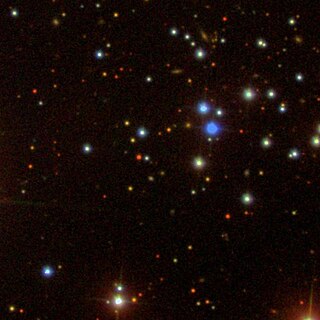
NGC 956 is an asterism in the constellation Andromeda.

NGC 7029 is an elliptical galaxy located about 120 million light-years away from Earth in the constellation Indus. NGC 7029 has an estimated diameter of 129,000 light-years. It was discovered by astronomer John Herschel on October 10, 1834. It is in a pair of galaxies with NGC 7022.

NGC 7020 is a barred lenticular galaxy located about 140 million light-years away in the constellation Pavo. NGC 7020 was discovered by astronomer John Herschel on August 31, 1836.
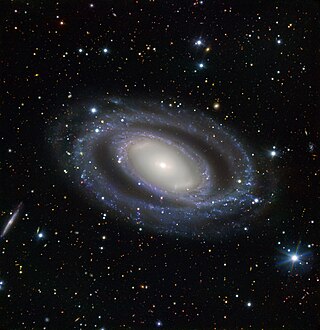
NGC 7098 is a doubled barred spiral galaxy located about 95 million light-years away from Earth in the constellation of Octans. NGC 7098 has an estimated diameter of 152,400 light-years. NGC 7098 was discovered by astronomer John Herschel on September 22, 1835.

NGC 1077 is a spiral galaxy in the constellation Perseus. It was discovered on 16 August 1886 by Lewis A. Swift. It was described as "very faint, pretty large, extended" by John Louis Emil Dreyer, the compiler of the New General Catalogue.

NGC 4476 is a lenticular galaxy located about 55 million light-years away in the constellation Virgo. NGC 4476 was discovered by astronomer William Herschel on April 12, 1784. The galaxy is a member of the Virgo Cluster.

NGC 503, also occasionally referred to as PGC 5086 or GC 5169, is an elliptical galaxy in the constellation Pisces. It is located approximately 265 million light-years from the Solar System and was discovered on 13 August 1863 by German astronomer Heinrich Louis d'Arrest.

NGC 512, also occasionally referred to as PGC 5132 or UGC 944, is a spiral galaxy in the constellation Andromeda. It is located approximately 217 million light-years from the Solar System and was discovered on 17 November 1827 by astronomer John Herschel.
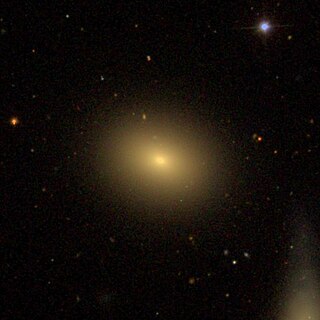
NGC 4551 is an elliptical galaxy located about 70 million light-years away in the constellation Virgo. It was discovered by astronomer William Herschel on April 17, 1784. NGC 4551 appears to lie close to the lenticular galaxy NGC 4550. However, both galaxies show no sign of interaction and have different red shifts. Both galaxies are also members of the Virgo Cluster.

NGC 6028 is a barred lenticular galaxy and a ring galaxy located about 200 million light-years away in the constellation Hercules. Ring galaxies such as NGC 6028 are also known as Hoag-type galaxies as they may have a resemblance to the prototype, Hoag's Object. NGC 6028 was discovered by astronomer William Herschel on March 14, 1784. It was then rediscovered by astronomer Guillaume Bigourdan on May 4, 1886.

NGC 519, also occasionally referred to as PGC 5182, is an elliptical galaxy located approximately 242 million light-years from the Solar System in the constellation Cetus. It was discovered on 20 November 1886 by astronomer Lewis Swift.

NGC 522, also occasionally referred to as PGC 5218 or UGC 970, is a spiral galaxy located approximately 122 million light-years from the Solar System in the constellation Pisces. It was discovered on 25 September 1862 by astronomer Heinrich Louis d'Arrest.

NGC 525, also occasionally referred to as PGC 5232 or UGC 972, is a lenticular galaxy located approximately 95.6 million light-years from the Solar System in the constellation Pisces. It was discovered on 25 September 1862 by astronomer Heinrich d'Arrest.




















